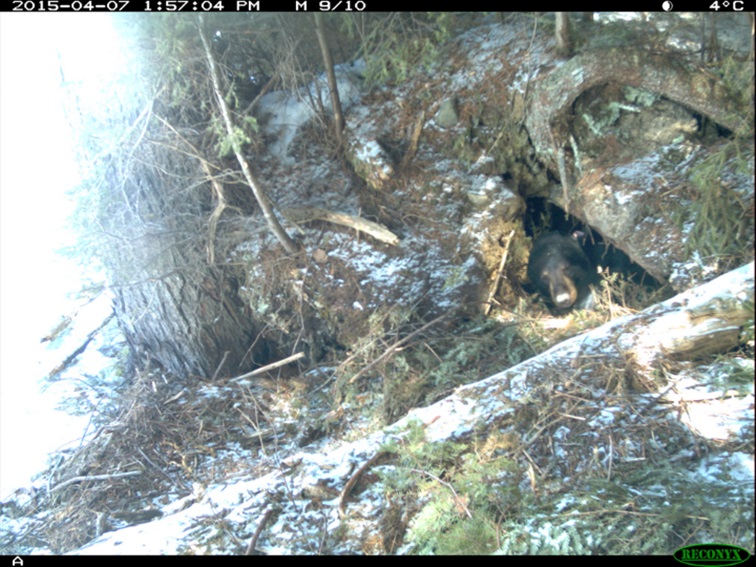It’s getting a bit cold, there’s not much food anymore, and Black Bears are thinking seriously about having a long nap.
Black Bears in Ontario Parks start heading to the den by mid-October.
We know you have questions about Black Bears’ big sleeps, so let’s go through for FABQs (frequently asked bear questions):
How do bears know when to go to sleep?
We don’t know exactly what makes a bear decide when to go to bed for the winter, but food has a lot to do with it.

In years where there are abundant fall foods, bears will stay awake to eat as much as they can and fatten up for the big sleep.
How do bears hibernate?
The way bears can just go to sleep and wake up months later no worse for wear is one of nature’s truly amazing feats.
To top this off, adult female bears give birth in the den and nurse their babies — all without eating.

Bears hibernate by slightly lowering their body temperature, breathing less, and lowering their heart rate.
They reduce their metabolism. Instead of eating, they use their fat as energy. Even still, they can lose one third of their body weight.
Do bears go to the bathroom in their den?
Bears are the ultimate recyclers during hibernation.
When bears are active in the spring, summer, and fall, they urinate throughout the day.

But hibernating bears take waste products contained in urine and further break them down into water and nitrogen that they use to maintain and build muscle.
That’s why they do not urinate when hibernating, and why they do not lose muscle mass either!
What about #2? Once bears enter the den, bears develop a fecal plug that stays in place until the next spring. Basically, it’s a poop plug.
Is mom sleeping when she has cubs?
Female bears are alert when the cubs are born, and they care for them when in the den.

The cubs are small (the size of a potato), have a bit of fur, and are blind.
They need to immediately crawl up and start nursing. These tiny bear cubs will snuggle close to mom in order to stay warm.
Do bears use the same den every year?
Since bears are so adaptable, if they find a place that looks good to den, they might just go to sleep there year after year.
It’s time to grow a cub!
Adult female bears who mated successfully this spring begin pregnancy once they enter the den.

Only then do the little fertilized eggs start to grow into bear cubs — and only if mom has gained enough weight.
Pregnant female bears who enter their den in poor condition will not give birth to cubs.
Her body can’t undertake the extreme demands of raising cubs if she doesn’t have a lot of fat stored.
This is an ‘adaptive advantage’ that prevents a female from having babies when it could jeopardize her own health.
Amazingly, Black Bears survive only off the fat they have stored, and the air they breathe when hibernating.
This winter, when you look out on the snow-covered cold Ontario landscape, know that there are thousands of bears warm and asleep in their winter dens in our vast forests.
Be Bear Wise!
Black Bears are amazing animals.
Let’s all do our best to respect and coexist with the Black Bears who call our protected areas home!
